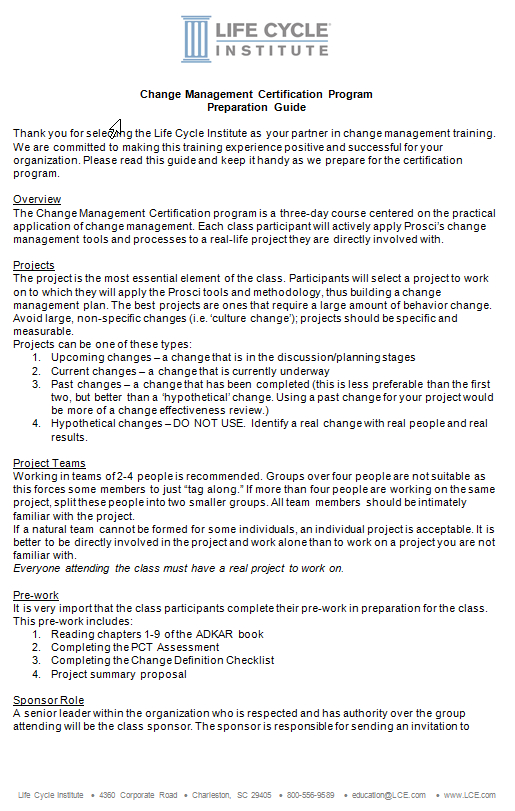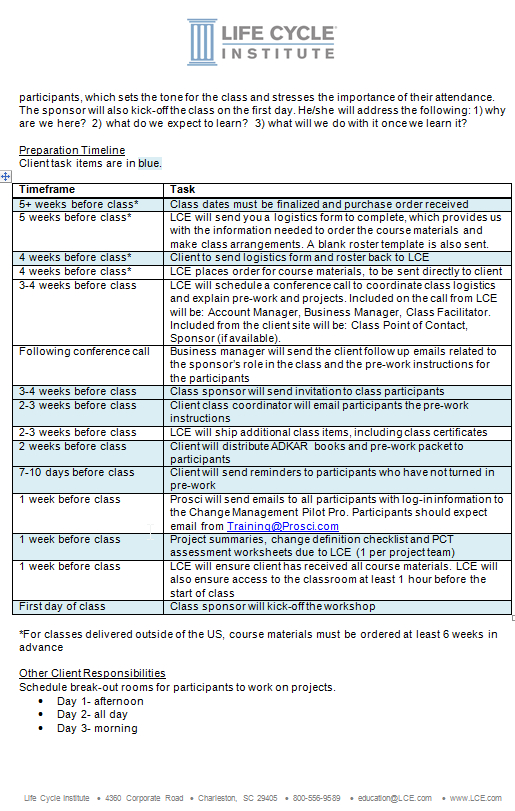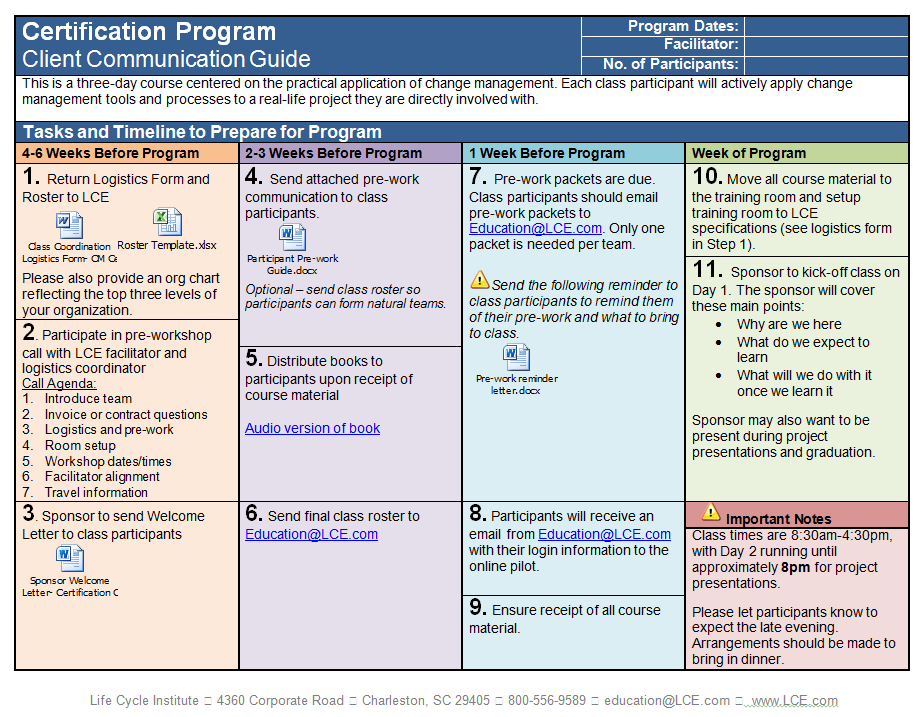Communication Intervention! Converting a Process Guide to a Communication Map
By Sherri Large, MMC, PMP
What is it?
A communication map is a simplified, visually organized method of communicating information. It clearly and concisely defines what a person is expected to do in an easy-to-follow step-by-step format. Communication maps can include links to other documents and reference material, or even contain embedded documents. This allows the recipient to access the exact information, exactly when it's needed, without having to juggle multiple documents.
Why is it used?
A communication map is used to simplify instructions or in place of lengthy process guides and standard operating procedures. It groups information into buckets by category, timeline or role, or a combination of these. It is meant to provide a quick reference of what should be done but doesn’t go into detail on “how.”
What factors are critical for success?
- Keep it simple! A communication map is meant to get straight to the point.
- Emphasize what needs to be done
- Be light on the detail
- Test it. Simplifying can be hard because you aren’t sure what should stay and what should go. Test the communication with someone unfamiliar with the process to ensure no critical information has been left out. This also helps to foresee issues people may have with embedded files.
How do you create it?
- Start with the original process guide or information sheet. If you don’t have one, document all of the major steps or pieces of information you need to convey.
- Chunk together steps or pieces. Depending on the purpose of the document, you may want to chunk content based on a timeline, content type, or job function.
- Determine the layout. A table format is a good place to start. Tables can be tricky, especially when a cell in one column may need to accommodate more information than a cell in an adjacent column. In these cases you may need to merge cells so they align across the row.
- Determine where the information needs to go. You may want to reserve blocks to call out general or important information.
- Use icons or a different font to draw attention to important information.
![]()
![]()
![]()
- Embed associated documents and links into the map. This will allow the reader to have all documents in one place instead of saving multiple attachments.
 Be mindful of documents that are saved on internal networks. If you are sending the document to someone without access to these networks you will want to embed the document into the map or provide a public URL.
Be mindful of documents that are saved on internal networks. If you are sending the document to someone without access to these networks you will want to embed the document into the map or provide a public URL. - Use color. Color-coding the map is a great way to group information or set apart a section from the rest of the document. Be cautious of using too many different fonts. This can make the map look messy and confusing.
- Test the map. Once the map is complete, have someone test it who is not familiar with the process.
Or….scratch all those steps and use this communication map that explains how to create a communication map! Hang this at your desk for a quick reference.
Communication intervention in action
Prior to transforming this preparation guide into a communication map, it was multiple pages and the same information was displayed by categories AND by timeline. In addition to this document, there were a total of five other attachments the user had to reference to complete all associated tasks. The reader had to read the entire guide, determine how the information pertained to the task items, and when in the process it was relevant.


Before
After the communication intervention, the lengthy guide was transformed into a useful, logical and esthetically appealing one-page communication map. This map is divided into sections by timeline and walks the user through steps in the process. The information maintains its categorical organization and is now presented when the user needs to see it. The reader now knows exactly which steps to pay attention to, depending on when she is viewing the map.

After
Download the communication map tutorial
© Life Cycle Engineering, Inc.
For More Information
843.744.7110 | info@LCE.com

